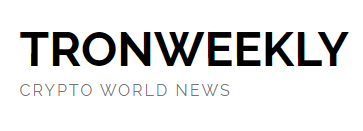Usually, we talk about corporate expense cards in the context of traditional business industries, such as financial services, retail, or B2B services. However, they are gradually becoming popular in innovative areas, such as eSports.
Competitive video games are becoming increasingly popular, attracting the attention of large corporations — investments in them are already measured in billions of dollars. As the stakes increase, so do the requirements for the financial management of teams and their sponsors. Accurate, dynamic, and rational cost management is becoming the key to success. And it can only be ensured by modern tools, such as expense cards.
We will tell you how they have become a real game-changer in eSports and how they are used in this field.
The Financial Challenges Faced by eSports and Gaming Teams
1. High-priority purchases. Sports require constant equipment updates and ongoing competition for unique products. And eSports is no exception. The main expenditure of professional gamers is electronics — from top-end video cards to custom mice and keyboards.
2. Frequent travel expenses. On average, athletes spend 9 out of 12 months a year on the road. Yes, modern technologies allow gamers to play from home. However, they must also participate in public events, such as tournaments, promotional events, and boot camps. Such travels quickly become a logistical nightmare, especially when all team members live in different regions or countries.
3. Sponsorship-driven budgets. Up to 60-80% of the funding of eSports teams comes from sponsorships. Each sponsor has a list of requirements and demands for transparency of expenses and reporting.
4. Decentralized spending. When players live in different countries, tracking their corporate expenses and compliance with local accounting rules becomes extremely difficult.
Practical Benefits of Corporate Expense Cards for eSports Teams
The main advantage of corporate expense cards in eSports is the ability to monitor financial transactions in real time. Using platforms like Wallester Business, a sponsor’s manager or representative receives instant notifications about any expenses. They can set up manual approval for transactions such as purchasing new equipment and automatic approval for purchasing advertising or tickets.
Additional benefits of expense cards include:
· Global usability. Currently, Wallester solutions are available in most countries. You can switch between different currencies without spending extra money on conversion and increased payment system fees.
· Instant access to funds. Team members no longer have to solve financial issues independently. They can make purchases using corporate expense cards linked to a centralized account.
· Spending controls. Famous eSports players are not the most disciplined people in the world. The use of cards linked to a centralized web service gives managers the ability to control their expenses. This helps avoid any violations, whether intentional or accidental.
· Streamlined reporting. The online platform helps generate reports in minutes. It categorizes expenses by areas and counterparties. This helps you comply with sponsors’ conditions in terms of transparency and honesty.
How to Integrate Expense Cards in eSports Team Management Effectively
As we mentioned above, eSports players do not necessarily have the proper level of financial discipline. Therefore, team managers often face various difficulties when switching to new payment solutions. To overcome them, you can rely on the following tips:
· Gamify the learning process. Create an instruction manual for using expense cards in the form of game rules. Conduct mandatory testing and determine rewards for those who do the best job. You can use positive reinforcement to help them consolidate their knowledge quickly by allowing them to pay with corporate cards to participate in an event or buy new peripherals.
· Establish equal authority. Although each player on the eSports team has a clearly defined role, every one of them is just as important as their colleague. Therefore, you should set the same rules and spending limits for corporate expense cards. If you need to make purchases for large amounts that require special approval, make them yourself, but remember to notify the team.
· Activate real-time notifications. If someone from the team accidentally tries to make an unauthorized expense, you can instantly prevent the violation. On platforms like Wallester, you can customize approval thresholds. For example, if the purchase amount exceeds $1,000, the player will be required to contact you.
Common Pitfalls and How to Avoid Them
And one more important nuance. Even if you keep everything under control, some problems can still slip out of your sight. Therefore, you should be especially careful in the following scenarios:
· During tournaments. High-pressure environments can lead to unnecessary expenses. Setting daily or per-transaction limits for expense cards ensures that budgets are not exceeded.
· When traveling. With transactions occurring across multiple countries, fraud protection is essential. Find out in advance how to block a problematic card and issue a new one quickly.
· When hiring new team members. Conduct onboarding and gradually bring the newcomer up to speed. Increase their limits and lift bans when they prove they are ready to follow the rules.
Conclusion
Corporate expense cards greatly simplify financial management in eSports, allowing managers, leaders, and sponsor representatives to focus on their top priorities. These tools make daily operations smoother and more efficient by addressing challenges like decentralized spending, frequent travel, and sponsor-driven budgets. They provide instant access to funds, enable real-time tracking, and simplify reporting — all while fostering transparency and trust.

 7 months ago
56
7 months ago
56




 English (US) ·
English (US) ·